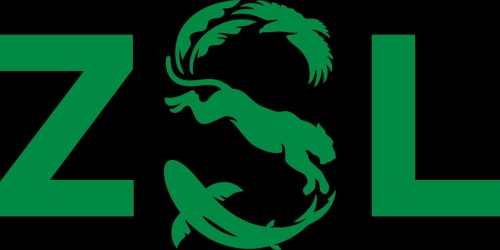For the past week, London has been treated to a series of surprise visits from an array of animals—courtesy of the elusive artist Banksy. These murals, featuring a variety of creatures from goats to gorillas, have been popping up across the city, bringing unexpected joy and amusement to Londoners during a time when uplifting news has been scarce. Banksy’s intention with these works is clear: to inject a dose of lightheartedness and playfulness into the public consciousness, countering the prevailing atmosphere of negativity with moments of creative whimsy.
The animal-themed art trail began with the appearance of a goat on Monday, on the side of a building near Kew Bridge. The mural depicts the goat standing precariously as rocks tumble beneath it, with a CCTV camera pointed directly at the animal—a subtle nod to the surveillance culture pervasive in urban environments. This first mural set the tone for the rest of the week, signaling the start of Banksy’s latest creative endeavor.The following day, two elephant heads, trunks outstretched in a tender gesture, appeared on the side of a house in Chelsea, West London. The serene image of these elephants, seemingly reaching out to one another, brought a touch of gentleness to the city’s streets. The juxtaposition of these massive, peaceful creatures against the backdrop of bustling Chelsea added a layer of poignancy to the work, as if inviting passersby to pause and reflect on the beauty of connection.
By Wednesday, the art trail had moved east, where three monkeys were seen hanging from a bridge in Brick Lane. This playful depiction of the primates dangling in mid-air drew crowds of onlookers, their mischief a humorous break from the daily grind. The choice of location, in one of London’s most vibrant and culturally diverse neighborhoods, seemed fitting for a piece that celebrated both the spontaneity and chaos that often characterize urban life.
Thursday’s mural took a turn with the first image of a prey animal, a howling wolf perched on a satellite dish in Peckham. The satellite dish, cleverly painted to resemble a full moon, added a dramatic flair to the scene, evoking the wild and untamed spirit of the animal. However, this piece also quickly became a target for theft, with images circulating of individuals attempting to remove the satellite dish. The Metropolitan Police were soon involved, highlighting the often ephemeral nature of Banksy’s work and the lengths some will go to claim a piece of his art.
The next day, Walthamstow in North London became the canvas for a mural of two pelicans perched above a fish and chip shop. The pelicans, caught mid-action as they snatched fish, brought a sense of lively energy to the otherwise mundane facade of the shop.
On Saturday, the focus shifted to Cricklewood, where a cat stretching lazily appeared on an old billboard. The simple yet charming image of the cat, captured in a moment of calm, stood in stark contrast to the bustling environment around it. However, this too was short-lived, as the billboard was removed just hours after the mural’s unveiling, prompting boos from the assembled crowd.
Sunday brought yet another surprise with a mural of swimming piranhas, this time on a City of London police box near Ludgate Hill. The sentry box, transformed into an aquarium-like scene with translucent spray paint, became an instant attraction, drawing large crowds throughout the day. The City of London Police, however, regarded it as "criminal damage," illustrating the fine line Banksy’s work often treads between public art and vandalism.
The following week an intricate mural on the shutters of London Zoo. The artwork featured a gorilla lifting the shutters to release a sea lion and birds, while other animals looked on from within. This piece, perhaps the most elaborate of the series, was quickly embraced by the zoo, with officials expressing their admiration and intent to preserve the artwork. The zoo’s spokesperson remarked on the fitting nature of Banksy’s choice, given the iconic status of the zoo itself.
In Charlton, southeast London, Banksy’s latest mural continues the animal-themed series with a striking image of a rhino. The artwork cleverly integrates its surroundings, as the rhino appears to be mounting a broken-down car parked in front of the building where the mural is painted. This playful interaction between the mural and the real-world object adds a layer of humor and ingenuity to the piece, making it one of the most talked-about installations in the series. The depiction of the massive animal seemingly in the act of overpowering the car also resonates with Banksy’s recurring themes of nature’s dominance over human constructs, blending wit with subtle commentary on the interaction between urban environments and wildlife.
In just nine days, Banksy has managed to leave an indelible mark on London, not only through the whimsical and thought-provoking nature of his murals but also by engaging the public in a citywide treasure hunt. Each piece, from the goat to the gorilla, has served as a reminder of the power of art to uplift, provoke, and inspire, especially amidst recent nation-wide turmoil.
Explore Banksy original art for sale at Guy Hepner and speak to our team via info@guyhepner.com for latest availabilities. Looking to sell your Banksy? We can help. Get in touch for a complimentary valauation.

